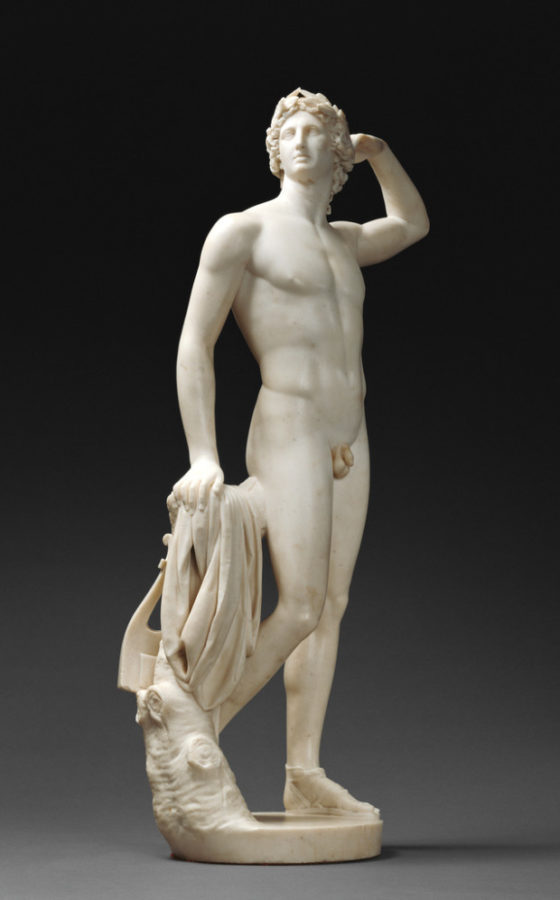Portraits of Catherine the Great, Empress of all the Russias
Catherine the Great (1729-1796) ruled almost the entire second half of the 18th century. Her reign was very successful on the world arena and gave...
Elizaveta Ermakova 25 March 2022
Antonio Canova was considered the greatest sculptor of his time. His sculptures fall into three categories: heroic compositions, compositions of grace, and sepulchral monuments. In each of these, Canova’s underlying artistic motivations were to challenge, if not compete with, classical statues. The majority of his works are Neoclassical however his earliest works displayed a late Baroque or Rococo sensibility that was appealing to his first patrons, the nobility of his native Venice. Check out the most famous sculptures of Antonio Canova and appreciate their beauty and eternal dignity.

Canova produced his statuette of Apollo Crowning Himself for a competition organized by the Venetian aristocrat Don Abbondio Rezzonico. The statuette was inspired by the ancient art of a physically idealized and emotionally detached figure. Furthermore this work came to define the Neoclassical style.

In 1781, Girolamo Zulian – the Venetian ambassador to Rome – hired Canova to sculpt Theseus and the Minotaur. The statue depicts the victorious Theseus seated on the lifeless body of a Minotaur. The Scottish painter, archaeologist, and dealer, Gavin Hamilton, who was a friend of Canova, advised that he should portray Theseus and the Minotaur after their struggle. He felt Canova would gain more favor and critical acclaim if he created a static group rather than a violent one. The sculpture did indeed receive widespread acclaim and helped establish Canova’s reputation as the leading European sculptor of his day.

By 1800 Canova was the most celebrated artist in Europe. He systematically promoted his reputation by publishing engravings of his works and having marble versions of plaster casts made in his workshop. He became so successful that he acquired patrons from across Europe including France, England, Russia, Poland, Austria, and the Netherlands.
Among his patrons were Napoleon and his family, who gave many commissions to Canova. The most notable piece he created for them was a sculpture of Pauline Bonaparte. Venus Victrix was originally conceived as a robed and recumbent sculpture of Pauline Borghese in the guise of Diana. Instead, Borghese ordered Canova to make the statue a nude Venus. The work was not intended for public viewing.

Duchess Maria Christina was the daughter of Empress Maria Theresa. Between 1790 and 1795 Canova designed a monument to Titian that was about to be built in Venice. However, the execution of the tomb became impossible after Venice was occupied by the French in 1797. The artist, therefore, decided to use the design and reallocate the memorial monument to a different person.
The monument was based on the Pyramid of Cestius in Rome and a modern interpretation of a figural tomb. The deceased appears only in a portrait medallion while the Christian imagery has been eliminated. The genius of death, the mourning lion, and the figures representing the different ages of humankind all suggest eternity and a visual language that would have been as comprehensible to the ancients as they are to us.

In 1820, Canova made a statue of George Washington for the state of North Carolina. A few years earlier the General Assembly of the State passed a bill calling for the purchase of a statue honoring George Washington. Uncharacteristically they set no limit on the cost. Prominent citizens asked Thomas Jefferson’s opinion and he advised them to have the sculpture done by the dominant Neoclassical sculptor, Canova.
Since Canova had never seen Washington, he was sent a plaster bust and a drawing of a portrait of Washington in order to aid him in his sculpting. Canova depicted Washington as a Roman general, dressed in a tunic, body armor, and a short cape. Ironically some thought that the statue should be put on rollers so that it could be quickly moved should something happen to the State House. However the rollers were abandoned for lacking dignity.
DailyArt Magazine needs your support. Every contribution, however big or small, is very valuable for our future. Thanks to it, we will be able to sustain and grow the Magazine. Thank you for your help!